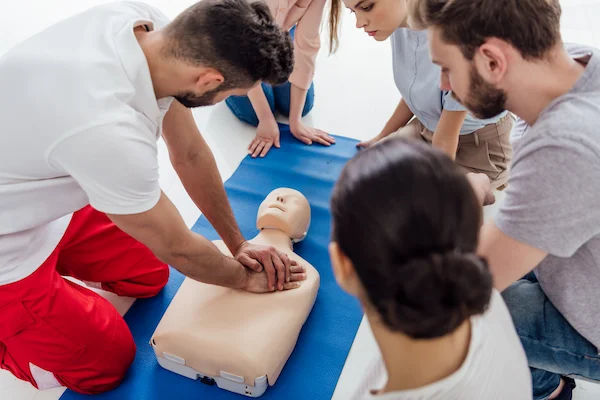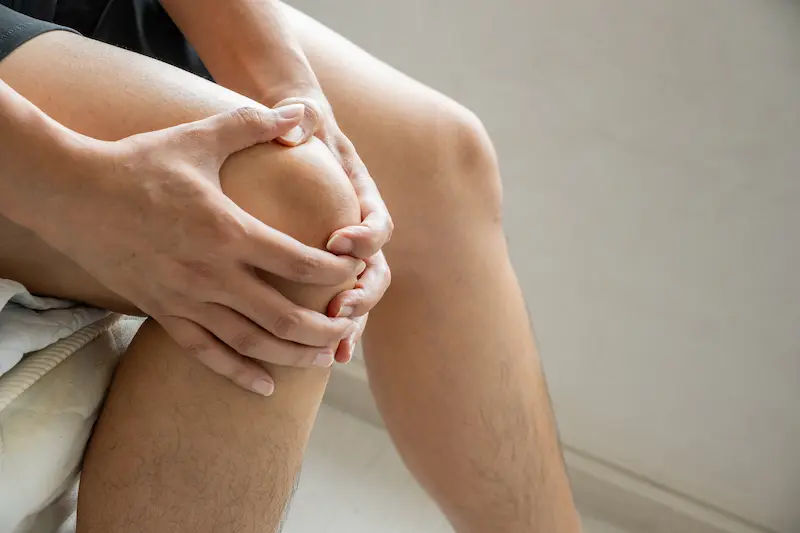Understanding Hypothermia
Learn about hypothermia, including its causes, symptoms, treatment, and prevention. Understand who is at risk, how to respond quickly, and how to stay safe in cold weather conditions.


Introduction
A dip in temperature can be more dangerous than it looks. Hypothermia happens when your core body temperature falls below 35°C (95°F), and it can develop outdoors in winter, indoors in poorly heated spaces, or even during prolonged exposure to cool water. The earlier you recognise hypothermia, the easier it is to act—whether that means warming up safely at home or calling for urgent help.
In this guide, you’ll learn what hypothermia is, how it happens, and who’s most at risk. We’ll walk through early and advanced symptoms, step-by-step hypothermia first aid, and what medical teams do in the hospital. You’ll get practical prevention strategies for daily life, work, and outdoor adventures, plus tips tailored to infants, older adults, and people with chronic conditions. We’ll also cover cold water immersion survival basics, common myths to avoid, and how to plan for safer cold-weather seasons.
If you’re concerned about hypothermia—whether for yourself, a family member, or a neighbour—this article offers clear, trustworthy guidance so you can respond with confidence.
What Is Hypothermia? Core Body Temperature Basics
Hypothermia is a drop in the body’s core temperature below 35°C (95°F), which interferes with vital organ function and the brain’s ability to regulate heat. Your body normally balances heat production (from metabolism and movement) with heat loss (to the environment). When heat loss outpaces production, temperature falls.
How the body loses heat:
- Conduction: Direct transfer of heat to colder objects, like sitting on cold ground or wearing wet clothes.
- Convection: Wind or moving air pulls warmth away, especially in damp, windy conditions.
- Radiation: Heat radiates from uncovered skin and head.
- Evaporation: Sweat or moisture on the skin cools you as it evaporates, a big factor in wet weather or water immersion.
Stages of hypothermia:
- Mild (32–35°C; 89.6–95°F): Shivering, goosebumps, feeling cold and clumsy, fast breathing and heart rate. People remain conscious but may be confused.
- Moderate (28–32°C; 82.4–89.6°F): Shivering often slows or stops, speech becomes slurred, coordination worsens, drowsiness and confusion deepen.
- Severe (<28°C; <82.4°F): High risk of cardiac arrhythmias, very slow breathing and heart rate, unconsciousness, and possible cardiac arrest.
Who Is Most at Risk? Everyday and Special Situations
Anyone can develop hypothermia, but certain groups are more vulnerable or more likely to encounter risky conditions.
Infants, older adults, and chronic illness
- Infants lose heat faster and can’t shiver effectively. They rely on caregivers to dress them warmly and keep environments safe.
- Older adults have reduced heat production and may have limited mobility, social isolation, or financial barriers to sufficient heating. Certain medications (sedatives, some psychiatric medications, beta-blockers) can impair thermoregulation.
- People with chronic illnesses (hypothyroidism, diabetes, malnutrition, sepsis) or substance use (alcohol, sedatives) face higher risk due to impaired heat production or impaired judgement. Alcohol dilates blood vessels, promoting heat loss—a critical myth to bust.
Outdoor workers, hikers, and swimmers
- Construction workers, delivery personnel, or anyone working in wind, rain, or snow face cumulative exposure.
- Hikers, skiers, and trail runners can get hypothermia in mild weather if wet and windy. Wet clothing dramatically increases heat loss via conduction and evaporation.
- Swimmers, paddlers, and anglers are especially vulnerable to cold water immersion. Water conducts heat away about 25 times faster than air at the same temperature.
Indoor or “urban” hypothermia
- Occurs in inadequately heated homes, especially in older or socially isolated adults. “Urban hypothermia” may happen gradually and be overlooked until symptoms are severe.
- During power outages or disasters, shelters and community checks are vital. Neighbourhood watch programmes and school or workplace policies can reduce risk.
Signs and Symptoms You Should Never Ignore
Recognising hypothermia early allows effective self-help and first aid before the situation escalates.
Early clues (mild hypothermia symptoms)
- Shivering, cold and pale skin, numb hands, clumsiness, and difficulty with fine motor tasks (zippers, laces).
- Fast breathing, faster heart rate, and mild confusion or irritability.
- For infants: cool skin, red cold hands/feet, unusual sleepiness, weak cry, or poor feeding.
Advanced warning signs (moderate to severe)
- Slurred or mumbled speech, marked confusion, stumbling, drowsiness, or apathy.
- Shivering may slow or stop as the body exhausts energy.
- Slow, shallow breathing; weak pulse.
- Severe: unconsciousness, very slow breathing or pulse, or no detectable pulse, possible cardiac arrest.
When to call emergency services
- If a person is drowsy, confused, has slurred speech, severe shivering, a very low body temperature, or is unconscious—call emergency services immediately.
- If hypothermia is suspected in a baby or older adult, err on the side of caution.
- Do not assume someone is dead in severe hypothermia; careful rewarming and reassessment by professionals are essential.
Immediate First Aid: What To Do Right Now
If you suspect hypothermia, act quickly but gently. Rough handling can trigger dangerous heart rhythms in severe cases.
Get out of the cold
- Move to a warm, dry shelter if possible. Shield the person from wind and moisture—use a tarp, space blanket, or even extra clothing as insulation.
- Remove wet clothing and replace with dry layers. Insulate the head, neck, armpits, and groin. Place the person on an insulating surface to reduce conductive heat loss.
Warming methods and what to avoid
- Passive rewarming: Wrap in warm blankets or sleeping bags, especially with vapour barriers (e.g., plastic sheeting) to keep heat in.
- Active rewarming: Apply warm (not hot) packs to the chest, neck, armpits, and groin. Use warm, sweet drinks if the person is fully awake and can swallow safely (no alcohol or caffeine). Avoid hot baths for moderate-to-severe cases—they can cause afterdrop and dangerous blood pressure changes.
- Do not massage or rub cold limbs. Do not use direct heat like a heating pad on numb skin. Avoid alcohol.
Special steps for infants and older adults
- For infants: Skin-to-skin contact with a caregiver under warm blankets can be helpful if the infant is alert and breathing normally; keep the head covered and monitor closely.
- For older adults: Be extra gentle, keep the head and neck supported, and monitor for confusion or slowed breathing.
If the person worsens or does not improve, call emergency services. Once safe, if symptoms persist beyond the immediate episode or you’re unsure about next steps, consult a doctor online with Apollo 24|7 for further evaluation and guidance.
Consult Top Specialists Here
Medical Diagnosis and Treatment in the Hospital
In moderate-to-severe hypothermia or when home measures fail, medical care is vital.
Measuring core temperature accurately
- Tympanic or oral thermometers are often unreliable in the cold. Clinicians use low-reading rectal thermometers or
oesophageal temperature probes for accuracy. - Core temperature determines staging and guides rewarming techniques.
Lab tests and monitoring
- Blood glucose (hypoglycaemia is common), electrolytes (including potassium), kidney function, and coagulation tests.
- ECG to detect arrhythmias. Continuous cardiac monitoring is standard in moderate-to-severe hypothermia.
- Consider thyroid function, cortisol, infection markers if an underlying cause is suspected. Apollo 24|7 offers convenient home collection for tests like thyroid function or vitamin D when follow-up is needed after stabilisation.
Rewarming therapies
- Passive external rewarming: Insulation and warm environment; ideal for mild cases.
- Active external rewarming: Forced-air warming blankets and radiant heat.
- Active internal (core) rewarming: Warmed IV fluids, heated humidified oxygen, warm peritoneal or pleural lavage in select cases.
- Extracorporeal rewarming: In severe hypothermia or cardiac arrest, ECMO or cardiopulmonary bypass can rewarm rapidly and improve survival.
Complications to anticipate and manage
- Afterdrop and rewarming shock: Move and rewarm the trunk first; avoid aggressive limb rewarming initially.
- Arrhythmias: Ventricular fibrillation risk increases with severe hypothermia; patients need gentle handling and monitoring.
- Coagulopathy, rhabdomyolysis, acute kidney injury, and pancreatitis are possible in severe or prolonged exposure.
Cold Water and Wilderness Scenarios
Cold water immersion and remote environments demand specific strategies.
The “1-10-1” rule and cold shock response
- Cold shock response: Sudden immersion can cause gasping and hyperventilation within the first minute—try to keep your airway above water and focus on controlling your breathing.
- 1 minute: Get breathing under control.
- 10 minutes: You have roughly 10 minutes of meaningful movement before swim failure—prioritise self-rescue or getting onto a floating object.
- 1 hour: Hypothermia-induced unconsciousness may take about an hour, depending on water temperature and clothing.
- Wearing a life jacket dramatically increases survival by keeping your airway clear during cold shock and when your muscles weaken.
Rescue and handling: Preventing rescue collapse
- Gentle handling is essential. Keep the person horizontal during rescue to reduce strain on the heart and avoid sudden drops in blood pressure.
- Prioritise removing from water, insulating, and rewarming the core. Avoid standing the person up quickly.
- In wilderness contexts, windproof and waterproof layers plus a sleeping bag, insulating pad, and vapour barrier are your best rewarming tools. Keep a hypothermia kit ready.
Preventing Hypothermia at Home, Work, and Outdoors
Hypothermia prevention tips work best when you combine clothing choices, environment control, and smart habits.
Layering systems and wind/water protection
- Base layer: Wicks moisture (synthetic or wool, not cotton).
- Mid layer: Insulation (fleece, wool, or puffy jacket).
- Shell: Windproof, water-resistant or waterproof jacket and trousers.
- Head, hands, feet: Warm hat, insulated gloves or mittens, and waterproof boots with warm socks (wool blends). Layering for cold weather clothing helps regulate heat as conditions change.
Nutrition, hydration, and medication considerations
- Eat regular meals; carbohydrates and fats fuel heat production. Warm, sweet beverages can help (avoid alcohol).
- Stay hydrated; dehydration worsens cold stress.
- Review medications with your doctor if you’re frequently in the cold—sedatives, some antipsychotics, and beta-blockers may impair thermoregulation. People with diabetes or thyroid disorders should plan extra carefully.
Cold-weather gear checklist
- Windproof/waterproof shell, insulating layers, spare dry base layers, hat, gloves/mittens, neck gaiter, warm socks, and waterproof boots.
- Emergency kit: space blanket, large trash bags (vapour barriers), chemical heat packs, fire-starting tools, high-energy snacks, and a charged phone or locator.
- At home: Insulate windows/doors, use draft stoppers, set a safe minimum indoor temperature, and check on neighbours during cold snaps. Keep an emergency heating plan for power outages.
Recovery, Follow-Up, and When to See a Doctor
After a hypothermia episode—especially moderate to severe—ongoing symptoms can linger.
Post-exposure care and monitoring
- Expect fatigue and stiffness for a day or two after mild hypothermia. Gradually resume normal activity.
- Seek care if you notice chest pain, palpitations, persistent confusion, numbness or tingling in fingers/toes, or skin colour changes that could indicate frostbite.
Screening for underlying causes and follow-up tests
- Recurrent or unexplained hypothermia may be related to thyroid dysfunction, adrenal issues, malnutrition, infection, or medication effects.
- Depending on your history, a clinician may recommend tests like thyroid panel, CBC, electrolytes, or blood glucose. Apollo 24|7 offers convenient home collection for tests like thyroid function or HbA1c if needed for follow-up.
When to consult a clinician
- If you had moderate/severe hypothermia, a medical review is advised, even if you feel better.
- If symptoms persist or you’re unsure about the cause, consult a doctor online with Apollo 24|7 for further evaluation. If your condition does not improve after trying self-care measures, book a physical visit to a doctor with Apollo 24|7.
- Discuss prevention strategies tailored to your work, hobbies, and health conditions.
Conclusion
Hypothermia is both common and preventable. It can strike on a windy hike, during a winter commute, or in a chilly, poorly heated room. The key is awareness: recognise early signs like shivering and clumsiness, and act quickly with simple, effective steps—get dry, insulate the core, use gentle heat, and avoid risky methods like rubbing or alcohol.
When symptoms are moderate or severe—confusion, slurred speech, or slowed breathing—seek emergency care. Medical teams can monitor core temperature and apply advanced rewarming techniques to prevent serious complications.
Prevention is your most reliable tool. Dress in layers, carry a waterproof shell, prioritise staying dry, and keep an emergency kit at hand. For families and caregivers, regularly check on infants and older adults during cold snaps and ensure your home or workplace has a cold-weather plan. If you’ve experienced unexplained or recurrent hypothermia, consider a follow-up evaluation for underlying conditions such as thyroid disorders or medication effects—convenient options like Apollo 24|7 can help you connect quickly with a clinician and arrange needed lab tests via home
collection.
With the right knowledge and preparation, you can enjoy cold-weather seasons more safely—and help protect those around you.
Consult Top Specialists Here
Consult Top Specialists Here
Dr. Shamim Anjum
Family Physician
15 Years • MBBS, M MED (Family Medicine)
Hyderabad
FAMILY CARE CLINIC, Hyderabad

Dr Summaiya Banu
General Practitioner
8 Years • MBBS
Hyderabad
Apollo 24|7 Clinic, Hyderabad
(225+ Patients)

Dr. Praveen Kumar Mukka
General Physician/ Internal Medicine Specialist
21 Years • MBBS, MD General Medicine
Hyderabad
Apollo 24|7 Clinic - Telangana, Hyderabad
(100+ Patients)

Dr. Rajib Ghose
General Physician/ Internal Medicine Specialist
25 Years • MBBS
East Midnapore
VIVEKANANDA SEBA SADAN, East Midnapore

Dr. Chethan T L
General Physician/ Internal Medicine Specialist
5 Years • MBBS, MD, DNB (General Medicine)
Bengaluru
Apollo Medical Center, Marathahalli, Bengaluru
Consult Top Specialists Here
Dr. Shamim Anjum
Family Physician
15 Years • MBBS, M MED (Family Medicine)
Hyderabad
FAMILY CARE CLINIC, Hyderabad

Dr Summaiya Banu
General Practitioner
8 Years • MBBS
Hyderabad
Apollo 24|7 Clinic, Hyderabad
(225+ Patients)

Dr. Praveen Kumar Mukka
General Physician/ Internal Medicine Specialist
21 Years • MBBS, MD General Medicine
Hyderabad
Apollo 24|7 Clinic - Telangana, Hyderabad
(100+ Patients)

Dr. Rajib Ghose
General Physician/ Internal Medicine Specialist
25 Years • MBBS
East Midnapore
VIVEKANANDA SEBA SADAN, East Midnapore

Dr. Chethan T L
General Physician/ Internal Medicine Specialist
5 Years • MBBS, MD, DNB (General Medicine)
Bengaluru
Apollo Medical Center, Marathahalli, Bengaluru
More articles from General Medical Consultation
Frequently Asked Questions
1) What temperature is considered hypothermia?
Hypothermia starts when core body temperature falls below 35°C (95°F), measured ideally with a low-reading rectal thermometer.
2) What are the first signs of hypothermia in adults?
Early signs of hypothermia in adults include shivering, pale or cold skin, numb fingers, clumsiness, and mild confusion.
3) What is the safest way to rewarm someone with hypothermia?
Move them to a warm, dry place, remove wet clothing, insulate the core (head, neck, armpits, groin), and use warm—not hot—packs on the trunk. Avoid rubbing cold limbs and do not give alcohol.
4) How is hypothermia different from frostbite?
Hypothermia affects the whole body’s core temperature, while frostbite is a localised freezing injury to skin and deeper tissues. Both can occur together; treat hypothermia first.
5) When should I see a doctor after hypothermia?
Seek medical care for moderate/severe symptoms, or if you have chest pain, palpitations, persistent confusion, or numbness/skin colour changes after exposure. If symptoms persist or you’re unsure, consult a doctor online with Apollo 24|7 for guidance.




